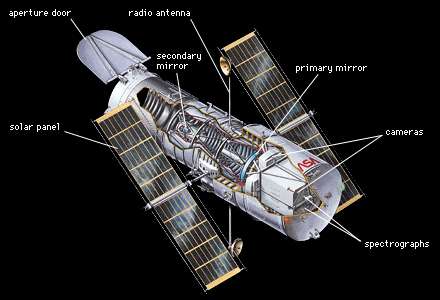- 3599 - HUBBLE - 3D Dash telescope? The largest near-infrared image ever taken by NASA's Hubble Space Telescope, enabling astronomers to map the star-forming regions of the universe and learn how the earliest, most distant galaxies originated.
--------------------- 3599 - HUBBLE - 3D Dash telescope?
- Named 3D-DASH, this high-resolution survey will allow researchers to find rare objects and targets for follow-up observations with the recently launched James Webb Space Telescope (JWST) during its decades-long mission.
-
- Since its launch more than 30 years ago, the Hubble Space Telescope has led a renaissance in the study of how galaxies have changed in the last 10-billion years of the universe. The 3D-DASH program extends Hubble's legacy in wide-area imaging so we can begin to unravel the mysteries of the galaxies beyond our own.
-
- 3D-DASH provides researchers with a complete near-infrared survey of the entire COSMOS field, one of the richest data fields for extragalactic studies beyond the Milky Way. As the longest and reddest wavelength observed with Hubble near-infrared means astronomers are better able to see the earliest galaxies that are the farthest away.
-
- The expanding Universe stretches visible light into the wider wavelength infra-red spectrum. Astronomers can then see objects that are further away.
-
- Astronomers also need to search a vast area of the sky to find rare objects in the universe. Until now, such a large image was only available from the ground and suffered from poor resolution, which limited what could be observed. 3D-DASH will help to identify the universe's most massive galaxies, highly active black holes, and galaxies on the brink of colliding and merging into one.
-
- Monster galaxies, the most massive ones in the universe formed by the mergers of other galaxies. How did their structures grow, and what drove the changes in their form?
It was difficult to study these extremely rare events using existing images.
-
- To image such an expansive patch of sky, the researchers employed a new technique with Hubble known as “Drift And Shift”. DASH creates an image that is eight times larger than Hubble's standard field of view by capturing multiple shots that are then stitched together into one master mosaic, similar to taking a panoramic picture on a smartphone.
-
- DASH also takes images faster than the typical technique, snapping eight pictures per Hubble's orbit instead of one picture, achieving in 250 hours what would previously have taken 2,000 hours.
-
- 3D-DASH adds a new layer of unique observations in the COSMOS field and is also a steppingstone to the space surveys of the next decade. It gives us a sneak peek of future scientific discoveries and allows us to develop new techniques to analyze these large datasets.
-
- 3D-DASH covers a total area almost six times the size of the moon in the sky as seen from Earth. This record is likely to remain unbroken by Hubble's successor JWST, which is instead built for sensitive, close-up images to capture fine detail of a small area.
-
- It is the largest near-infrared image of the sky available to astronomers until the next generation of telescopes launch in the next decade, such as the Nancy Grace Roman Space Telescope and Euclid.
-
- Until then, professional astronomers and amateur stargazers alike can explore the skies using an interactive, online version of the 3D-DASH image.
-
June 10, 2022 HUBBLE - 3D Dash telescope? 3599
----------------------------------------------------------------------------------------
----- Comments appreciated and Pass it on to whomever is interested. ---
--- Some reviews are at: -------------- http://jdetrick.blogspot.com -----
-- email feedback, corrections, request for copies or Index of all reviews
--- to: ------ jamesdetrick@comcast.net ------ “Jim Detrick” -----------
--------------------- --- Saturday, June 11, 2022 ---------------------------

No comments:
Post a Comment